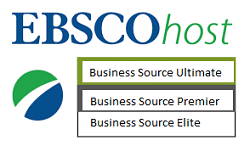Creating complexity matrix for classifying artificial intelligence applications in e-commerce: New perspectives on value creation
DOI:
https://doi.org/10.15637/jlecon.2078Keywords:
Artificial Intelligence, E-commerce,, Value Creation, AI in marketing, Digital MarketingAbstract
This research paper provides a comprehensive exploration of the role of Artificial Intelligence (AI) in value creation within the e-commerce sector, focusing on how task and information complexity affect AI deployment. It first outlines the historical development of value theory and value creation, highlighting the shift from traditional modes to modern interactive and co-creation models. Following this, the paper delves into AI’s potential in various e-commerce dimensions including personalization, product recommendation, supply chain efficiency, and more. The centrepiece of the study is a detailed matrix classifying AI into Automated Intelligence, Assisted Intelligence, and Augmented Intelligence, based on the complexity of tasks they execute and the information they analyse. This research study engaged a panel of fifteen industry and academic experts to critically examine and assign complexity scores to various Artificial Intelligence applications within the e-commerce and similar sectors. The experts evaluated task and information complexity, thereby enabling a classification of the applications into a comprehensible matrix. This classification not only provides a guide for AI system design and evaluation but also enhances understanding of their functional dynamics. The paper contributes theoretically by advancing our understanding of AI as a value creator in e-commerce and practically by offering a roadmap for businesses to adopt and leverage AI technologies. As AI continues to revolutionize the e-commerce sector, the findings of this study provide invaluable insights for businesses seeking to gain a competitive advantage in the digital marketplace.
Downloads
References
AMA (2017). Definitions of Marketing by American Marketing Association. Retrieved May 2022, from https://www.ama.org/the-definition-of-marketing-what-is-marketing/
ANDRESEN, S. L. (2002). John McCarthy: father of AI. IEEE Intelligent Systems, 17(5), 84-85.
BARLA, A., CUNEO, M., & NUNZI, S. R. (2022). AI-based component management system for structured content creation, annotation, and publication. In AHFE international. https://doi.org/10.54941/ahfe1001009
BAWACK, R. E., WAMBA, S. F., CARILLO, K. D. A., & Akter, S. (2022). Artificial intelligence in E-Commerce: a bibliometric study and literature review. Electronic Markets, 1-42.
BOATENG, G. O., NEILANDS, T. B., FRONGILLO, E. A., MELGAR-QUIÑONEZ, H. R., & YOUNG, S. L. (2018). Best practices for developing and validating scales for health, social, and behavioral research: a primer. Frontiers in public health, 6, 149.
BORGES, A., LAURINDO, F. J. B., DE MESQUITA SPINOLA, M., GONÇALVES, R. F., & DE MATTOS, C. A. (2021). The strategic use of artificial intelligence in the digital era: Systematic literature review and future research directions. International Journal of Information Management, 57, 102225. https://doi.org/10.1016/j.ijinfomgt.2020.102225
CHESBROUGH, H., LETTL, C., & RITTER, T. (2018). Value creation and value capture in open innovation. Journal of Product Innovation Management, 35(6), 930-938.
DAVENPORT, T., GUHA, A., GREWAL, D., & BRESSGOTT, T. (2020). How artificial intelligence will change the future of marketing. Journal of the Academy of Marketing Science, 48(1), 24-42.
EGGERT, A., ULAGA, W., FROW, P., & PAYNE, A. (2018). Conceptualizing and communicating value in business markets: From value in exchange to value in use. Industrial Marketing Management, 69, 80-90.
GARCIA‐CASTRO, R., & AGUILERA, R. V. (2015). Incremental value creation and appropriation in a world with multiple stakeholders. Strategic management journal, 36(1), 137-147.
GOSSEN, H. H. (1854). Entwickelung der Gesetze des menschlichen Verkehrs, und der daraus fließenden Regeln für menschliches Handeln. Friedrich Vieweg und Sohn.
HALIM, I. (2012). Aristotle's Explanation for the Value of the External Goods (Doctoral dissertation, Columbia University).
HOLMES, F. (2019). AI Will Add $15 Trillion To The World Economy By 2030. Forbes. Retrieved August 8, 2022, from https://www.forbes.com/sites/greatspeculations/2019/02/25/ai-will-add-15-trillion-to-the-world-economy-by-2030/?sh=4adad5a11852
HUANG, M. H., & RUST, R. T. (2021a). A strategic framework for artificial intelligence in marketing. Journal of the Academy of Marketing Science, 49(1), 30-50.
HUANG, M. H., & RUST, R. T. (2021b). Engaged to a robot? The role of AI in service. Journal of Service Research, 24(1), 30-41.
ISRAFILZADE, K. (2020). WHAT S IN A NAME EXPERIMENT ON THE AESTHETIC JUDGMENTS OF ART PRODUCED BY ARTIFICIAL INTELLIGENCE. Journal of Arts, 3(2), 143–158. https://doi.org/10.31566/arts.3.011
ISRAFILZADE, K. (2021). Conversational marketing as a framework for interaction with the customer: Development & validation of the conversational agent’s usage scale. Journal of Life Economics, 8(4), 533–546. https://doi.org/10.15637/jlecon.8.4.12
KOTLER, P., & ARMSTRONG, G. (2020). Principles of Marketing, 18th Global Edition. New York, NY: Pearson Education.
KUMAR, N., & KUMAR, R. (2021). The Application of Artificial Intelligence in Electronic Commerce. Turkish Journal of Computer and Mathematics Education, 12(12), 1679-1682.
KUMAR, T., & TRAKRU, M. (2020). The colossal impact of artificial intelligence. E-commerce: statistics and facts. Int. Res. J. Eng. Technol.(IRJET), 6, 570-572.
MCCARTHY, J., MINSKY, M. L., ROCHESTER, N., & SHANNON, C. E. (2006). A proposal for the dartmouth summer research project on artificial intelligence, august 31, 1955. AI magazine, 27(4), 12-12.
MELOVIĆ, B., JOCOVIĆ, M., DABIĆ, M., VULIĆ, T. B., & DUDIC, B. (2020). The impact of digital transformation and digital marketing on the brand promotion, positioning and electronic business in Montenegro. Technology in Society, 63, 101425.
MICU, A., MICU, A. E., GERU, M., CĂPĂȚÎNĂ, A., & MUNTEAN, M. C. (2021). The impact of artificial intelligence use on the e-commerce in Romania. Amfiteatru Economic, 23(56), 137-154.
MOURA, S., REIS, J. L., & RODRIGUES, L. S. (2021). The Artificial Intelligence in the Personalisation of the Customer Journey–a literature review. CAPSI 2021 Proceedings. 28.
NICHIFOR, E., TRIFAN, A., & NECHIFOR, E. M. (2021). Artificial intelligence in electronic commerce: Basic chatbots and the consumer journey. Amfiteatru Economic, 23(56), 87-101.
NIMBALKAR, A. A., & BERAD, A. T. (2021). The Increasing Importance Of Ai Applications In E-Commerce. Vidyabharati International Interdisciplinary Research Journal, 13(1), 388-391.
PALLATHADKA, H., RAMIREZ-ASIS, E. H., LOLI-POMA, T. P., KALIYAPERUMAL, K., VENTAYEN, R. J. M., & NAVED, M. (2021). Applications of artificial intelligence in business management, e-commerce and finance. Materials Today: Proceedings.
PANIGRAHI, D., & KARUNA, M. (2021). A Review on Leveraging Artificial Intelligence to Enhance Business Engagement in Ecommerce. ISSN, 2582(7421), 2.
PINDYCK, R. S., & RUBINFELD, D. L. (2017). Microeconomics, Global Edition. Pearson.
PRENTICE, C., WANG, X., & LOUREIRO, S. M. C. (2019). The influence of brand experience and service quality on customer engagement. Journal of Retailing and Consumer Services, 50, 50-59.
PROVAN, K. G., FISH, A., & SYDOW, J. (2007). Interorganizational networks at the network level: A review of the empirical literature on whole networks. Journal of management, 33(3), 479-516.
PWC (2021). PwC’s Global Artificial Intelligence Study: Sizing the prize. PwC. Retrieved August 8, 2022, from https://www.pwc.com/gx/en/issues/data-and-analytics/publications/artificial-intelligence-study.html
RAMASWAMY, V., & OZCAN, K. (2020). The “Interacted” actor in platformed networks: theorizing practices of managerial experience value co-creation. Journal of Business & Industrial Marketing, 35(7), 1165–1178. https://doi.org/10.1108/jbim-10-2018-0318
REDLICH, T., & MORITZ, M. (2016). Bottom-up Economics. Foundations of a Theory of Distributed and Open Value Creation. In The decentralized and networked future of value creation (pp. 27-57). Springer, Cham.
REDLICH, T., MORITZ, M., & WULFSBERG, J. P. (2019). Introduction: Co-creation in the Era of Bottom-Up Economics. In Management for professionals (pp. 1–6). Springer Nature. https://doi.org/10.1007/978-3-319-97788-1_1
SAMEK, W., WIEGAND, T., & MÜLLER, K. R. (2017). Explainable artificial intelligence: Understanding, visualizing and interpreting deep learning models. arXiv preprint arXiv:1708.08296.
SHUKLA, N., KOLBEINSSON, A., OTWELL, K., MARLA, L., & YELLEPEDDI, K. (2019). Dynamic pricing for airline ancillaries with customer context. In Proceedings of the 25th ACM SIGKDD International Conference on knowledge discovery & data mining, 2174-2182.
SJÖDIN, D., PARIDA, V., JOVANOVIC, M., & VISNJIC, I. (2020). Value creation and value capture alignment in business model innovation: A process view on outcome‐based business models. Journal of Product Innovation Management, 37(2), 158-183.
SMITH, A. (1776). An Inquiry into the Nature and Causes of the Wealth of Nations. JM Dent and Sons, London.
SONI, V. D. (2020). Emerging roles of artificial intelligence in ecommerce. International Journal of trend in scientific research and development, 4(5), 223-225.
SOUTHERTON, D. (2011). Encyclopedia of Consumer Culture (1st ed.). SAGE Publications, Inc.
WEBB, M. E. (2019). The Impact of Artificial Intelligence on the Labor Market. Social Science Research Network. https://doi.org/10.2139/ssrn.3482150
WINDSOR, D. (2017). Value Creation Theory: Literature Review and Theory Assessment. In Business & society 360 (pp. 75–100). Emerald Publishing Limited. https://doi.org/10.1108/s2514-175920170000004
YANG, C., FENG, Y., & WHINSTON, A. (2022). Dynamic pricing and information disclosure for fresh produce: An artificial intelligence approach. Production and Operations Management, 31(1), 155-171.
ZAMANZADEH, V., GHAHRAMANIAN, A., RASSOULI, M., ABBASZADEH, A., MAJD, H. A., & NIKANFAR, A. (2015). Design and Implementation Content Validity Study: Development of an instrument for measuring Patient-Centered Communication. Journal of Caring Sciences, 4(2), 165–178. https://doi.org/10.15171/jcs.2015.017
Downloads
Published
How to Cite
Issue
Section
License
Copyright (c) 2023 Holistence Publications

This work is licensed under a Creative Commons Attribution 4.0 International License.
When the article is accepted for publication in the Journal of Life Economics, authors transfer all copyright in the article to the Holistence Publications.The authors reserve all proprietary right other than copyright, such as patent rights.
Everyone who is listed as an author in this article should have made a substantial, direct, intellectual contribution to the work and should take public responsibility for it.
This paper contains works that have not previously published or not under consideration for publication in other journals.

















